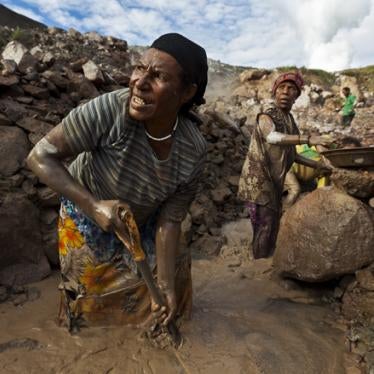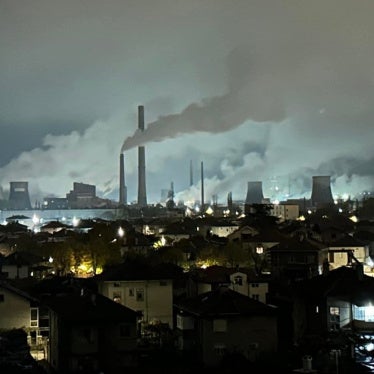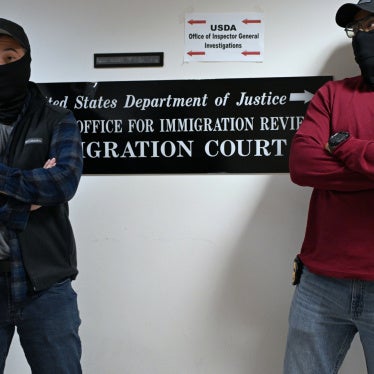In many poor rural areas around the world, men, women, and children work in artisanal gold mining to make a living. Artisanal or small-scale mining is mining through labor-intensive, low-tech methods, and belongs to the informal sector of economy. It is estimated that about 12 percent of global gold production comes from artisanal mines.
There are an estimated 10 to 15 million artisanal gold miners worldwide, working in about 70 countries. In some regions, up to 20 percent of miners are children. According to the International Labor Organization (ILO), there are about one million children working in artisanal mining worldwide, and the number is rising. There has been a dramatic rise in the price of gold since the start of the financial crisis in 2008, and artisanal gold mining is likely to remain an attractive economic activity for many people in impoverished, rural areas.
Most artisanal gold miners—adults and children—use mercury to extract gold from the ore, as it is easy to obtain and the cheapest and easiest method available. They amalgamate gold with mercury and then burn the amalgam to separate out the gold, risking their health and their lives. Work with mercury is classified as hazardous under international law and should not be performed by anyone under the age of 18.
Under the leadership of the United Nations Environment Program (UNEP), governments are in the process of negotiating an international, legally binding instrument on mercury. The negotiations, in particular the upcoming third session of the Intergovernmental Negotiating Committee (INC3) in Nairobi from October 31 to November 4, 2011 offer an important opportunity to protect the right to health of millions of children and adults in artisanal mining communities.
Mercury’s Effect on Children’s and Adults’ Health
Mercury is a toxic substance that attacks the central nervous system. There is no known safe level of exposure. Mercury poisoning causes a range of neurological conditions, including coordination problems and memory loss. Mercury can also attack the cardiovascular system, the kidneys, the gastrointestinal tract, the immune system, and the lungs. Symptoms of exposure to mercury include tremors, twitching, vision trouble, headaches, memory and concentration problems. Mercury can also affect women's reproductive health, for example by reducing fertility and increasing the chance of miscarriage. Artisanal miners are exposed to mercury through the inhalation of vapors that develop when the amalgam is smelted. Inhaling the vapor is the most dangerous form of mercury exposure for gold miners. A second, somewhat less dangerous route of exposure is skin contact; miners touch mercury with their bare hands. Mercury poisoning can be diagnosed by medical experts, but is hard to detect for others —researchers have described mercury intoxication an “invisible epidemic.”
Mercury is particularly harmful to children and can impair a child’s cognitive development.
A medical study on mercury exposure of children in artisanal gold mines in Indonesia and Zimbabwe found that children living in the mines had significantly higher levels of mercury in their blood, hair, and urine than those living elsewhere. Children who both lived in mining areas and worked with mercury showed the highest level of mercury concentration in the body. The main cause for this was their exposure to mercury vapors when burning amalgam to recover gold. Children also frequently showed signs of mercury intoxication, such as coordination problems (ataxia), tremors, and memory problems.
Some women work with mercury when they are pregnant or breastfeeding. This is dangerous, as mercury is particularly harmful to unborn babies and infants, and can be transmitted in utero and through breast milk. Mercury exposure also threatens the health of children who are not themselves working in artisanal mining. Many women who carry out amalgamation, either at the mine or at home, have small children with them who breathe in mercury vapor. In addition, children might be exposed to mercury when they eat fish: mercury-contaminated water is sometimes dumped into rivers and may convert into its most toxic form, which is accumulated by fish.
Papua New Guinea
A Human Rights Watch investigation found that artisanal gold miners around the industrial Porgera mine in Papua New Guinea routinely use mercury. The mercury-gold amalgam is often burned inside people’s homes, exposing children to mercury vapor. In some cases families use the same utensils for amalgamation to prepare food. Many artisanal miners interviewed by Human Rights Watch said they had heard that mercury could be dangerous but believed they had been working with the substance for so long they were immune to any negative effect it might normally have. Shops sold vials of mercury openly.
The chief doctor at the hospital closest to the Porgera mine said that although his institution lacked the equipment necessary to test for mercury poisoning, staff regularly diagnosed cases of mercury poisoning from the severe symptoms of many illegal miners. He said that many patients resembled “zombies” by the time they reached the hospital, and added that “some will recover, some will not.”[1]
Mali
A Human Rights Watch investigation in Mali found that children as young as six years old carry out amalgamation, touchingmercury with their bare hands when mixing it into the ore. No child we interviewed understood the dangers of mercury use. An 11-year-old girl from told us how she works with mercury:
Once the ore is panned, you put a bit of mercury in. You rub the ore and the mercury with your two hands. Then, when the mercury has attracted the gold, you put it on a metal box and burn it. When I have finished, I sell the gold to a trader. I do this daily.… I know mercury is dangerous, but I don’t know how. I do not protect myself.[2]
Some artisanal miners consider mercury a powerful, magic substance. A 16-year-old boy who carried out amalgamation explained:
No one has ever told me that mercury is dangerous. We are told that it has magic powers… to capture the gold out of minerals. We work without any protection here…. This work exhausts me and often makes me sick.[3]
Although mercury is a dangerous product under Malian government regulations, the mercury trade is flourishing. Traders told Human Rights Watch that they buy mercury from countries in the sub-region, notably Ghana and Burkina Faso. Mercury traders sell or provide mercury to children without explaining the health risks.
The Future Mercury Treaty: An Opportunity to Protect the Right to Health
It is vital that the current negotiations for an international, legally binding instrument on mercury focus on how to protect the right to health of millions of children and adults in artisanal mining communities. International human rights law spells out rights that are highly relevant, and that should form the basis of the future mercury treaty.
In particular, the International Covenant on Economic, Social and Cultural Rights enshrines the right to the highest attainable standard of health and obliges states to improve “all aspects of environmental and industrial hygiene”. Under the treaty, states also have a core obligation to ensure child health care and protect children from employment that harms their health. The International Covenant on Civil and Political Rights stipulates that every human being has the inherent right to life.
The Convention on the Rights of the Child obliges States Parties to ensure to the maximum extent possible the survival and development of the child. It enshrines the right of the child to the enjoyment of the highest attainable standard of health and to facilities for medical treatment. Furthermore, it recognizes the right of the child to be protected from economic exploitation and from work that is likely to be hazardous or to interfere with the child's education, or to be harmful to the child's health or physical, mental, spiritual, moral or social development. ILO Convention 182 prohibits all worst forms of child labor; this includes work in an unhealthy environment that exposes children to hazardous substances.
HRW Recommendations to Governments Attending the Third Session of the Intergovernmental Negotiating Committee (INC3)
The mercury treaty should require governments to prepare and implement national action plans to reduce, and where possible eliminate, the use of mercury in artisanal gold mining. The draft treaty already foresees, in one of is options, the creation of action plans, and proposes a range of measures to reduce, control, and ultimately eliminate mercury in artisanal gold mining, provide information on mercury, and include key stakeholders in its implementation.
However, the draft treaty does not propose sufficient measures in the areas of health. Human Rights Watch therefore calls for mandatory national action plans on mercury stipulating that:
Governments should develop a health care response for communities, and particularly children, already affected by mercury poisoning, including testing and treatment, as well as long-term social and medical services as needed.
- Governments should establish a public health program specifically related to mercury poisoning, including gathering of health data, training for health care workers, awareness-raising through health facilities, and testing and treatment of mercury intoxication where possible.
- Governments should develop strategies, within a specified time frame,to prevent the use of mercury by children and pregnant women working in artisanal and small-scale gold mining. Such strategies should include awareness-raising, enforcement of child labor laws, and programs to withdraw children from artisanal mining work altogether.
- Specific targets for mercury reduction have to be set within 5, 10, and 20 years.
In addition, governments negotiating the treaty should explicitly base the treaty in international human rights law, with particular reference to the right to the highest attainable standard of health care, the right to life, and the child’s right not to be subjected to worst forms of child labor.







